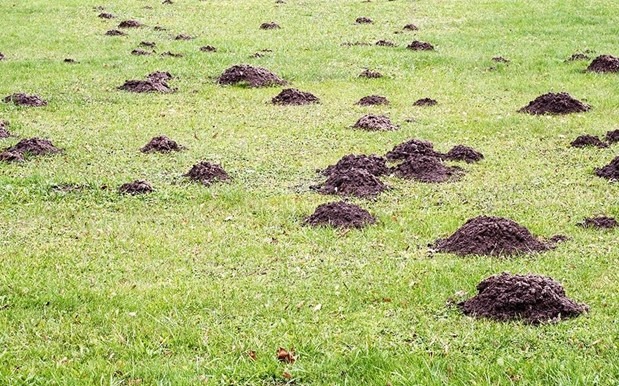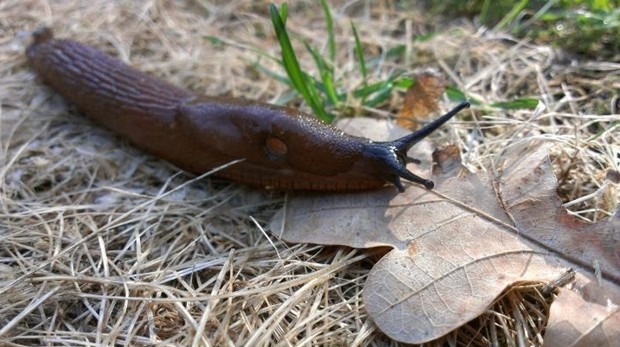You love having a lawn, because it gives you a chance to exercise your creativity when it comes to having a beautiful garden. You tend to it every day in love, until one day you notice that it has tunnels and mounds all over; ruining the progress of your hard work.
Since they are infamous for tunneling through lawns and eating plants and worms under the soil surface, they will quickly leave your once-beautiful garden into a lumpy mound of mess. The bad news is that there are plenty of lawn owners that have no idea their lawn is suffering an infestation, and will only notice the signs when it is too late – when the moles have done plenty of damage to your grass and other plants.
Fortunately, educating yourself on the signs of these animals coming in is possible, and you can deal with them as soon as possible. Whether it is through the use of mole repellers or biological control methods, we will talk about the identification of the moles as well as eliminating them.
The signs of moles in your lawn
All the signs we will see require some knowledge on how moles work and live, but the most obvious one is seeing an actual mole. It is not difficult to distinguish them anyway – they are actually strange in their appearance. They have very small eyes, pointed muzzles, and bodies that are approximately the size of a potato. They also have wide front paws that are flipper-like, which help them to eat up insects and bugs in the dirt.
However, catching them is not that easy. Because they operate the most at night and they will spend much of their time underground, you will not see moles that much in your garden. Rather than seeing them physically, the most recognizable and common sign is the presence of an underground tunneling, which is visible on the ground surface.
Moles count insects and grubs as their food, and will reach them by tunneling through dirt. While this might seem good because these are the insects that will damage the plants in your lawn, the moles also cause damage because they raise mounds of soil all over your lawn, which will loosen dirt and make your lawn look less than appealing.
Therefore, while removing bugs and grubs that damage your lawn sounds like a very nice option, it will come at the cost of surface damage and tunnels all over – it is not a good idea to allow these animals to remain around.
Aside from the raised areas of soil mounds and surface damage, there are also additional damage that moles can cause. The disorganization brings the risk of secondary pests, which come and use these tunnels that the moles left. These pests include mice and voles, which will proceed to move through the tunnels, and eat plant roots and seeds.
Moles do operate primarily under the ground surface, but their damage can extend to above the surface. Moles also do not eat plants, so they will not consume your grass, but the damage they cause is due to the tunnels they dig while searching for food.
How to eliminate moles
Before you rush to get mole treatment techniques and materials, it is always recommended to have a lawn professional to check out your lawn and confirm that there is a mole infestation. This is because there are multiple times that moles can be confused for voles and pocket gophers.
Moles are always quite difficult to remove – while fumigants, poisons, and repellants are options, you should avoid using them if you have children or pets that might expose themselves to it. You might also hear of solutions like spraying castor oil or putting moth balls in the tunnels, but these are not effective,
Once you know that moles are what you are dealing with, there are some options you can take to remove them entirely, which we will discuss below.
Depriving them of food
It is normal that any pest will require food for them to survive. If you have a pest in your lawn, then that means that your lawn has a food source that is favorable to it, and that is why it lives there.
As we mentioned earlier, moles have 2 food sources – worms, and grubs (the larvae of some insects). Therefore, the first step of control you can exercise is applying insecticides that will kill the insects and remove the food source. The other option is if the moles are attracted to the lawn because of the presence of earthworms, then the insecticide option will not necessarily work.
The other problem of getting rid of earthworms is that they are actually beneficial for your garden or lawn, and you want to avoid getting rid of them because of moles.
Trapping, baiting, and repelling
This is probably the best method of removing moles, but the problem is that many are afraid of using them – probably due to safety and humane reasons. You can also use mole repellents and poisons, which are widely available.
Many commercial repellents use castor oil as a basis, or even use other ingredients. Note that when you decide to use mole poison or repellent, you will need to water the place where you are applying them, and this is to allow the poison or repellent to seep downwards into the soil. You can then water the space well, both after and before the application, and making sure that you follow the instructions of the manufacturer correctly.
Other than the poisons, you can use specific traps that will catch the pests, and they include choker mole traps, scissors mole traps, and harpoon mole traps. Before using these traps though, make sure they are legal in your state; there are states that prohibit relocation of animals, especially since the traps do not kill off the animal.
Final thoughts
If all else fails when you are trying to catch moles, you can always enlist the services of an expert in this area. Regardless of the method you use, you need to deal with the problem as early as possible to avoid further damage.


